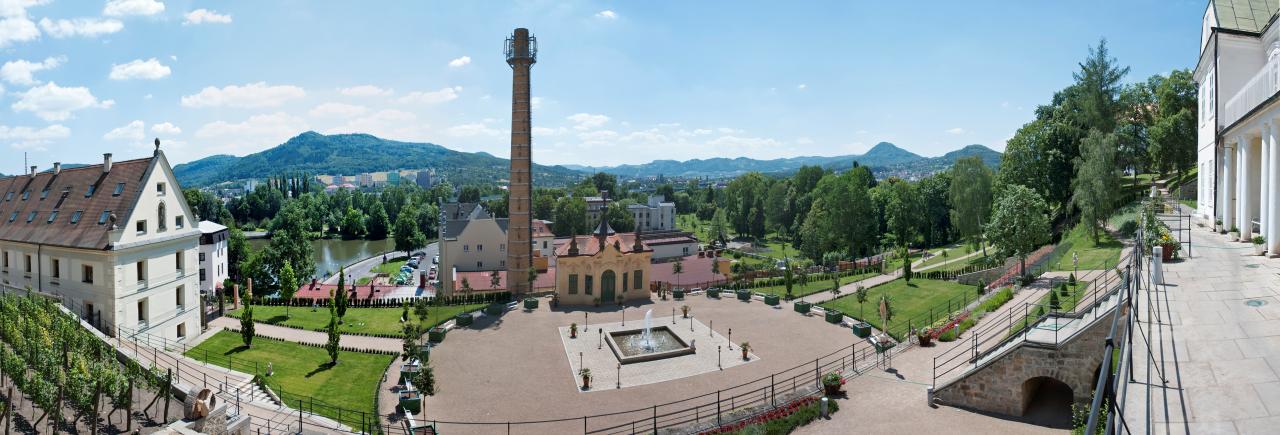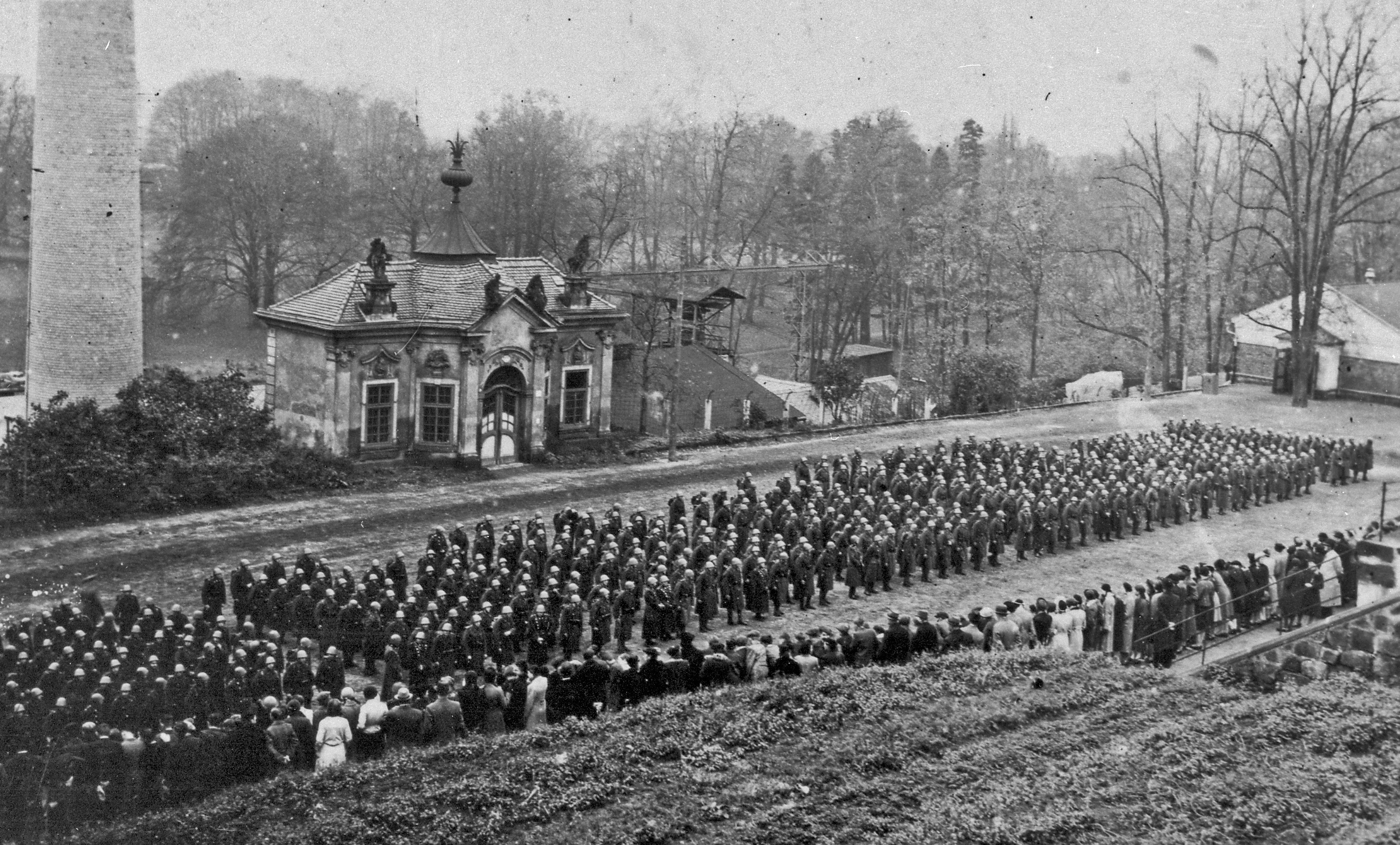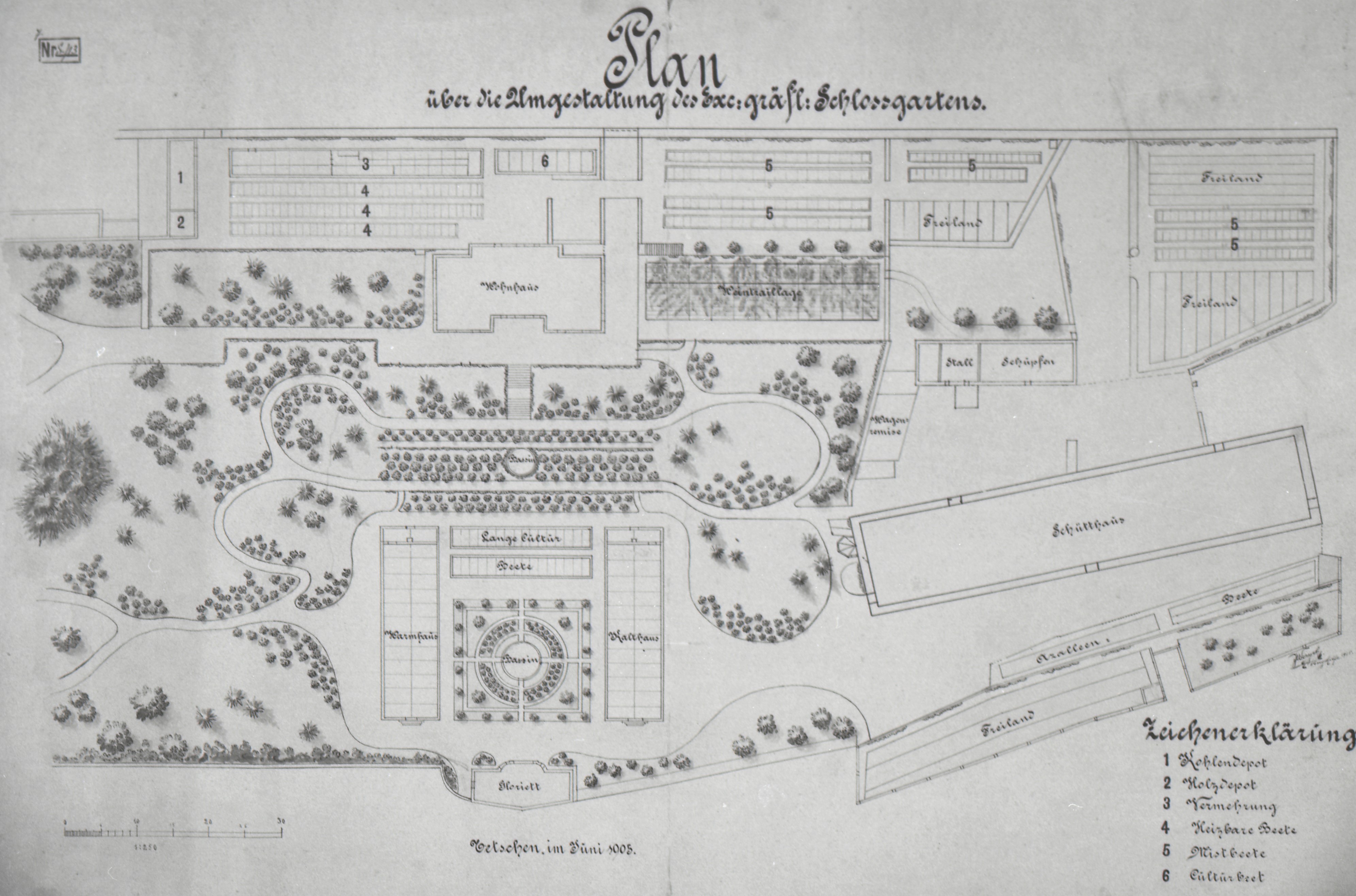

Děčín Chateau southern gardens
- mid 18th century - the present day
- Děčín Chateau is surrounded by two gardens, the south garden and the rose garden. Both gardens are closely linked with the development of botany, horticulture and pomology in Bohemia. The complex of gardens is complemented by the Marian meadow, the site of Děčín’s original town settlement, where an extensive chateau park was built after 1831. Some of the most prominent figures associated with the development of the gardens include Franz Josst, his son Franz Josst Jr. and Benedikt Roezl.
- Work began to build the southern chateau gardens in the early 18th century. A Baroque pentagonal bastion was erected on the southern side of the chateau slope, planted with vineyards. The vast interior of the fortification system gradually filled up with flower beds, gardens and garden structures – greenhouses, an orangery and, in 1737, even a tea pavilion, lavishly decorated in the oriental style. At the beginning of the 19th century its owner, František Antonín Thun, had five terraces built, on which 18 heated greenhouses were gradually installed, used to grow orchids, camellias, pineapples, orange trees and other tropical plants. The gardens were at the height of their glory in the middle of the 19th century thanks to the work of the famous gardener Franz Josst, who succeeded in cultivating victoria regia, the largest tropical water lily in the world. It was here in the gardens of Děčín Chateau that the victoria flowered for the first time in the Habsburg monarchy and probably throughout continental Europe in 1852. The fame of the gardens was closely linked to the gardeners Franz Josst, his son Franz Josst Jr. and Benedikt Roezl, a prominent traveller and orchid connoisseur, who studied in Děčín under Josst. After the tragic death of Franz Josst in December 1862 and after the death of his son in 1905 the renown of the Děčín gardens began to wane. The definitive end came for the southern gardens after Děčín Chateau was sold to the Czechoslovak army in 1932. The Czechoslovak soldiers had all the greenhouses removed and built a drilling ground and new stables on the lowest terrace, with warehouses and garages later added. From 1968 the chateau was occupied by the Red Army, which resulted in its total devastation. After the soldiers left in the early 1990s extensive restoration work commenced, the final stage of which was the renovation of the southern gardens, which were opened in 2013.
- References
- Slavíčková, H: Zámek Děčín. Děčín 1991.
Slavíčková, H.; Joza, P.: Děčín. Praha – Litomyšl 2005.
Šuman, F.: Inter arma silent musae: šedesát let pobytu čtyř armád na děčínském zámku. Děčín 2010.
Šuman, F.: Zámek Děčín: historický průvodce. Děčín 2007. - jam
- Show in map
Keywords
; ; ; ; ;
Connected places
Franz Josst memorialDěčín Chateau rose garden
Benedikt Roezl Memorial






